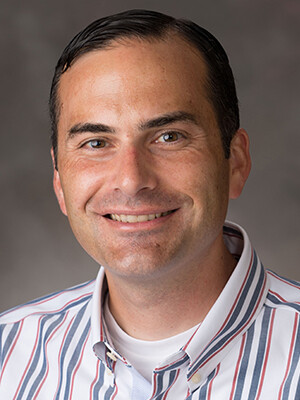
The University of Nebraska-Lincoln is working with Nebraska high schools to develop an online tool focused on climate modeling.
Cory Forbes, associate professor of science education in the School of Natural Resources at Nebraska, will lead the four-year project funded by a $1.7 million grant from the National Science Foundation. To develop the curriculum, the team will use global climate models, which are used to produce daily weather reports and climate-related news. While the general public rarely comes into contact with these models, they are commonly used by NASA scientists.

“A lot of science in today’s world is based around these computer-based models, something historically K-12 students don’t really have a lot of exposure to,” Forbes said. “Students need an understanding of how these models are used in science.”
Forbes said the team will use climate as a launch-pad for high school students to explore other issues related to food, energy and water. For instance, students will use the tool to look at historical data and climate trend predictions in the Great Plains to see how they might impact the agricultural economy and other industries.
Forbes will work with Mark Chandler, a climate scientist at Columbia University who also works at NASA’s Goddard Institute for Space Studies; Devarati Bhattacharya, a K-16 STEM education postdoctoral fellow at Nebraska; and partner school districts throughout the state to develop, implement and assess the new curriculum. Funding also supports a doctoral student and undergraduate student researchers.
“We’re taking the largest computational models on the planet and getting them into the hands of high school students in Nebraska,” Chandler said.
Martha Shulski, director of the Nebraska State Climate Office, will advise the team on curriculum development.
“Educating youth on climate and climate change will help lead to an informed public that is able to navigate this complex issue that impacts us all,” Shulski said.
The first phase of the project will be focused on designing and piloting locally relevant, standards-based curriculum built around the online tool. The team will work with a small number of Lincoln Public School teachers to develop the curriculum, which will be piloted in high school science classrooms in LPS and other districts. By the project’s fourth year, the team expects to include 55 secondary teachers and 3,000 students.
Climate change is an interdisciplinary core idea included in Nebraska’s new science standards. The project also contributes to the missions of the Institute of Agriculture and Natural Resources’ Science Literacy Initiative and Nebraska Collaborative for Food, Energy and Water Education. They are core parts of IANR’s efforts to foster a scientifically literate society capable of making effective decisions grounded in science-informed analysis of complex, real-world challenges associated with food, fuel, water, landscape and people.









